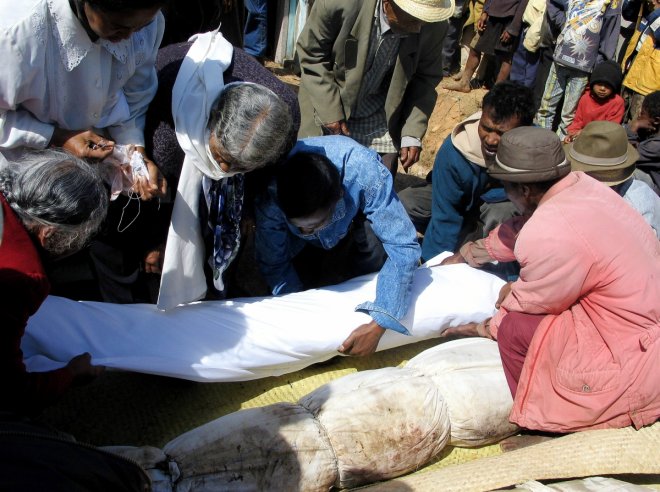
It is said that history always repeats itself. This has proved true in the case of Africa, which is currently in the middle of a dangerous epidemic outbreak, called the second Black Death, which had wiped out a third of Europe's population in the 14th century.
The plague began in Madagascar and has claimed more than 120 victims till now, 50 of them being aid workers. This is not the first time that Africa is facing an outbreak, but this year the disease has come back stronger and more resilient.
The notorious microbe responsible for the epidemic is the same that killed 50 million people during the Black Death. However, this time it is more dangerous as it has become pneumonic; capable of spreading through coughing, sneezing and spitting. Even the bubonic form of the plague becomes air-borne if left untreated.
Experts have warned that the epidemic could last for another six months. The World Health Organisation (WHO) has sent 1.5 million US dollars, medical staff, plague specialists and epidemiologists to the afflicted areas, after being criticised for its slow response in 2014 when West Africa was dealing with the Ebola virus.
Nearby places like Mauritius, the Maldives and the Seychelles have come under danger as the germ can be transmitted through a single traveller to these popular tourist spots. The Seychelles is presently putting all travellers from Madagascar into quarantine.
Experts are blaming different factors for the disease's spread, like the weather changes caused due to the El Nino current and Famadihana, a tradition in Africa in which locals dig up corpses of their late relatives and dance with them.
However, the basic precaution that has to be maintained is cleanliness. And that is where Africa needs lessons from the past.
In 1994, Surat city in India saw a virulent type of plague that killed 50 people that led to major panic and mass evacuations, alarming the world. People fled the city and businesses shut down. That was when the local administration ushered in strict vigilance and minute monitoring to eliminate the germ entirely.
All these steps helped Surat become one of the cleanest cities in India and it continues to maintain strict hygiene standards even today.
Unless the Madagascar authorities and citizens follow similar steps, it is difficult to stem the growth of the epidemic from Madagascar to other African nations.









